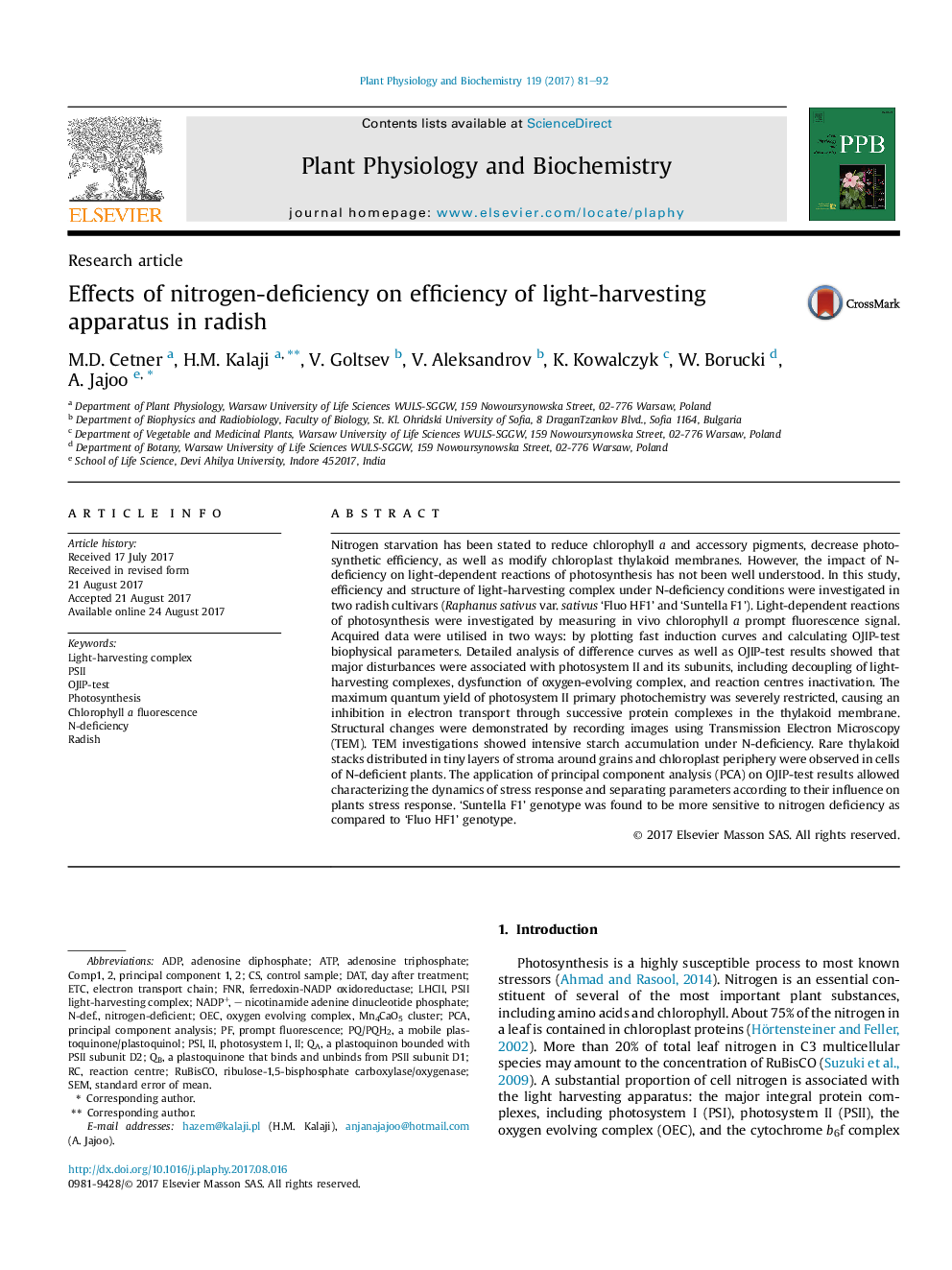| Article ID | Journal | Published Year | Pages | File Type |
|---|---|---|---|---|
| 5515293 | Plant Physiology and Biochemistry | 2017 | 12 Pages |
â¢Two weeks of N-starvation affected plant functioning and development.â¢In photochemical reactions the major disturbances were associated with PSII.â¢Degradation of chloroplast lamellar structure was observed by TEM.â¢Plants were able to recover after restoring the full of nutrient solution.â¢Use of Principal Component Analysis (PCA) allowed to characterize sequential changes.
Nitrogen starvation has been stated to reduce chlorophyll a and accessory pigments, decrease photosynthetic efficiency, as well as modify chloroplast thylakoid membranes. However, the impact of N-deficiency on light-dependent reactions of photosynthesis has not been well understood. In this study, efficiency and structure of light-harvesting complex under N-deficiency conditions were investigated in two radish cultivars (Raphanus sativus var. sativus 'Fluo HF1' and 'Suntella F1'). Light-dependent reactions of photosynthesis were investigated by measuring in vivo chlorophyll a prompt fluorescence signal. Acquired data were utilised in two ways: by plotting fast induction curves and calculating OJIP-test biophysical parameters. Detailed analysis of difference curves as well as OJIP-test results showed that major disturbances were associated with photosystem II and its subunits, including decoupling of light-harvesting complexes, dysfunction of oxygen-evolving complex, and reaction centres inactivation. The maximum quantum yield of photosystem II primary photochemistry was severely restricted, causing an inhibition in electron transport through successive protein complexes in the thylakoid membrane. Structural changes were demonstrated by recording images using Transmission Electron Microscopy (TEM). TEM investigations showed intensive starch accumulation under N-deficiency. Rare thylakoid stacks distributed in tiny layers of stroma around grains and chloroplast periphery were observed in cells of N-deficient plants. The application of principal component analysis (PCA) on OJIP-test results allowed characterizing the dynamics of stress response and separating parameters according to their influence on plants stress response. 'Suntella F1' genotype was found to be more sensitive to nitrogen deficiency as compared to 'Fluo HF1' genotype.
